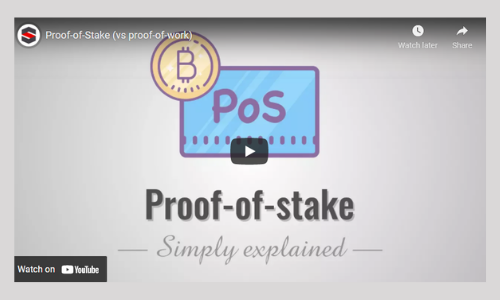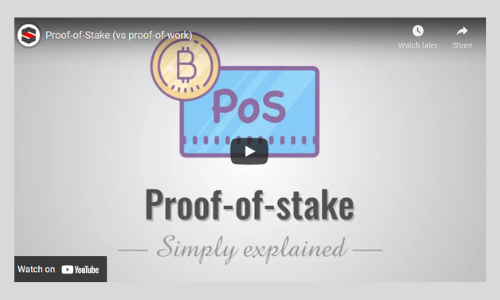


Proof-of-Stake (vs proof-of-work) - Cryptocurrencies use a ton of electricity because of mining. In recent years people started working on a different technique called Proof-of-Stake. Not only does it use less energy, but it can also be more secure. This video provides a simple explanation of how Proof-of-Stake works.
The Proof of Stake (PoS) concept states that a person can mine or validate block transactions according to how many coins they hold. This means that the more coins owned by a miner, the more mining power they have.
The proof of work (PoW) consensus algorithm requires each node in the Bitcoin network to solve a problem. The first node that solves the problem is granted permission to add a new block and the miners are awarded bitcoin for their work. The nodes are the administrative body of the blockchain and verify the legitimacy of the transactions in each block. Once a block of transactions has been verified, the data is written into the blockchain.
The proof of stake (PoS) consensus protocol was created as an alternative algorithm seeking to address the scalability and environmental sustainability concerns surrounding the proof of work (PoW) protocol.
For more details - check out Investopedia
Video produced and simply explained by Xavier Decuyper - Check out more Simply Explained videos on YouTube.
Disclaimer: This article and video are provided for informational purposes only. They are not offered or intended to be used as legal, tax, investment, financial, or any other advice.
